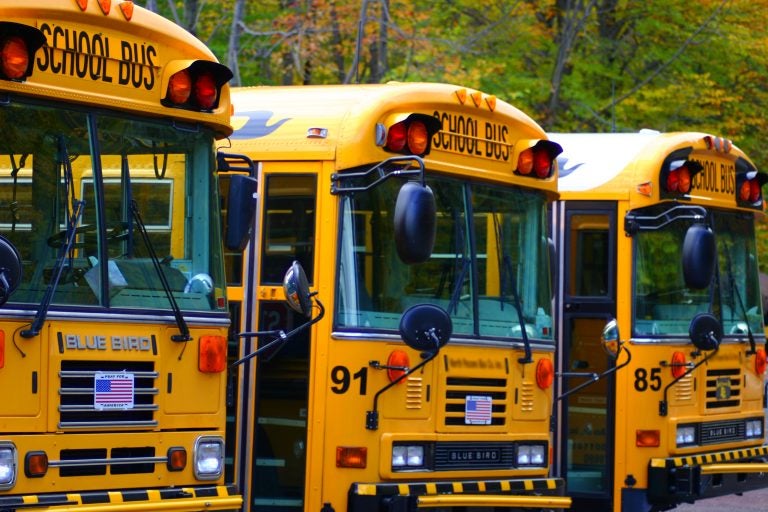Delaware grapples with educational challenges, 50 schools identified as low-performing
Delaware’s worst performing schools will start state-monitored improvement plans, as 18 schools exit support programs, showing progress amid complex challenges.
Listen 1:41
School buses are seen in a file photo. (BigStock)
From Philly and the Pa. suburbs to South Jersey and Delaware, what would you like WHYY News to cover? Let us know!
This story was supported by a statehouse coverage grant from the Corporation for Public Broadcasting.
Fifty schools in Delaware are grappling with the weight of low performance, a figure that underscores the pressing challenges within the state’s education system.
Students in these schools are falling behind. For some schools, it’s the majority of the student body that’s struggling. For others, poor performance is more limited to specific subgroups, such as English language learners, students with disabilities or certain racial and ethnic groups.
The state identifies low-performing schools after an accountability calculation conducted annually, which evaluates student performance and categorizes schools into Comprehensive School Improvement or Targeted School Improvement.
“The difference between them are really whether the whole school, like all students are underperforming – CSI – or whether it is a specific sub-population – TSI,” said Laura Saperstein, the education associate for accountability in the Office of Assessment and Accountability. “In our [Every Student Succeeds Act] plan, we are required to have certain subpopulations like race and ethnicity broken out as well as special populations like students with disability, English language learners.”
“We rank all of the Title 1 schools from the highest to lowest and the bottom 5% are what set our threshold. Now, we do have schools that are non-Title 1s. So if any of them fall below the threshold, they might also be identified,” she added.
Title 1 schools are schools that have 40% or more low-income students, or schools with an low-income percentage that equals or is higher than the district’s low-income percentage, according to the Delaware Department of Education’s website.
The CSI and TSI initiatives were implemented as part of the federal Every Student Succeeds Act in 2015, which aimed to hold states accountable for public schools serving students from kindergarten to 12th grade. Since then, the Department of Education has utilized a complex identification process through the Delaware School Success Framework, tailored to different school models, including elementary, middle and high school models.
“Within the school success framework, there are four to five indicators that they are being measured on,” Saperstein said. “Within each indicator, there are several measures. So, for example, the academic achievement indicator, the school quality and student success, the graduation indicator, and the growth in early language development, for the kids that are English language learners.”
As the education department begins its third cohort of schools under these programs, 11 Delaware schools have been identified as CSI, six have been re-identified as CSI, and 33 schools fall under TSI-1.
Factors that result in schools being classified as CSI included a graduation rate of 67% or less, while schools are slotted as TSI if they don’t improve after three years.
The 50 schools are now conducting a comprehensive needs assessment, the first step in developing their improvement plans. According to Paulette Gaddy, director of Title Programs and Grant Support at the state Department of Education, the following two years will focus on implementing these plans.
“The schools undergo a needs assessment based on their designation,” said . “We work together with the schools and their stakeholders to create plans. We develop their goals and their action steps based on the outcomes of the needs assessment. Then we monitor the plan over the next two years with the schools, just making sure that they’re staying on track, meeting their targets, and meeting their goals.”
Although the education department provides support, schools work independently with stakeholders to identify root causes of underperformance and develop their own strategies for improvement.
Despite the complex and multifaceted challenges these schools face, Gaddy emphasizes that progress is achievable.
“Based on the data in the cohorts from cohorts one and two. There were some schools that were able to exit status and not be reidentified,” she said. “So those are some of the success stories that we like to reference as we move into cohort 3.”

Get daily updates from WHYY News!
WHYY is your source for fact-based, in-depth journalism and information. As a nonprofit organization, we rely on financial support from readers like you. Please give today.







